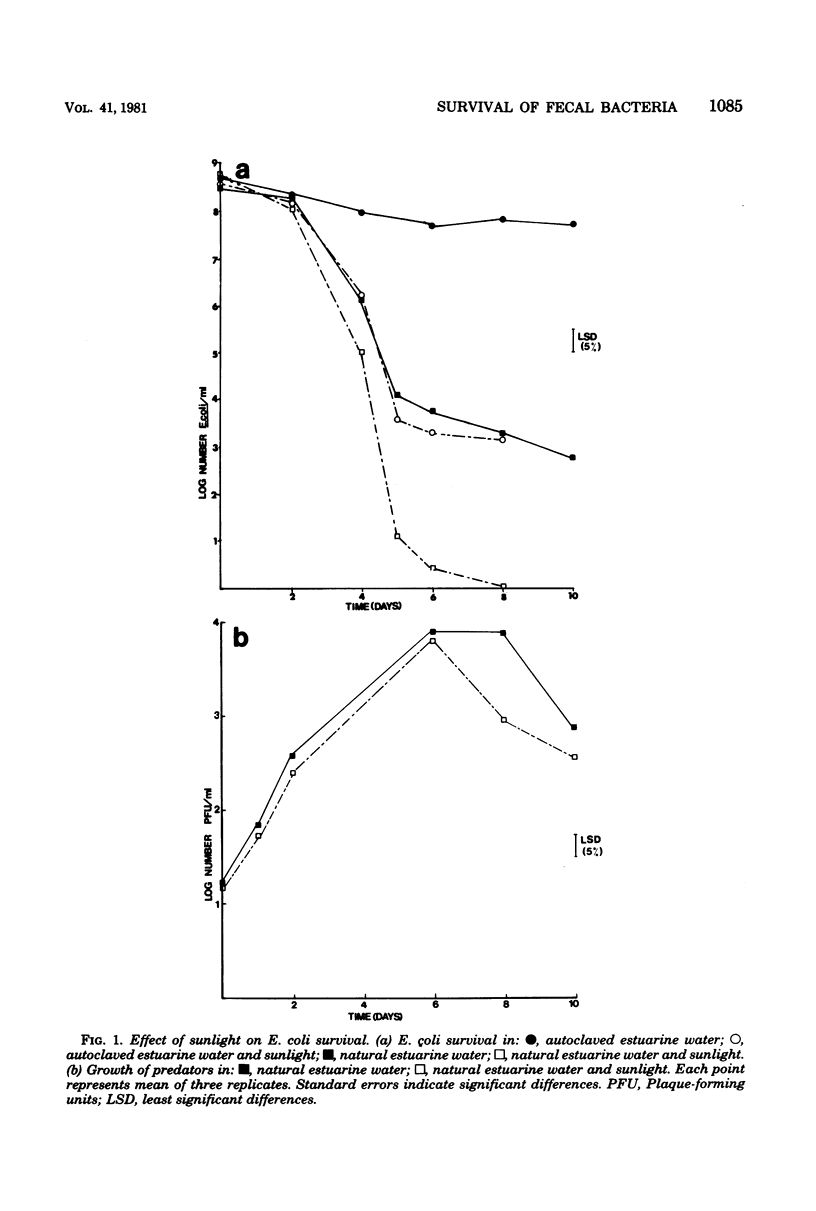Abstract
The effect of solar radiation and predacious microorganisms on the survival of bacteria of fecal and plant origin was studied. The decline in the numbers of Escherichia coli cells in estuarine water samples was found to be significantly greater in the presence of both naturally occurring microbial predators and solar radiation than when each of these factors was acting independently. The effect of solar radiation on microbial predators was negligible, whereas the susceptibility of bacteria to light-induced decay varied from one organism to another, as follows: Klebsiella pneumoniae greater than E. coli greater than Salmonella typhimurium, Streptococcus faecium, Enterobacter aerogenes, Erwinia herbicola.
Full text
PDF




Selected References
These references are in PubMed. This may not be the complete list of references from this article.
- Eisenstark A. Mutagenic and lethal effects of visible and near-ultraviolet light on bacterial cells. Adv Genet. 1971;16:167–198. [PubMed] [Google Scholar]
- Enzinger R. M., Cooper R. C. Role of bacteria and protozoa in the removal of Escherichia coli from estuarine waters. Appl Environ Microbiol. 1976 May;31(5):758–763. doi: 10.1128/aem.31.5.758-763.1976. [DOI] [PMC free article] [PubMed] [Google Scholar]
- McCambridge J., McMeekin T. A. Relative effects of bacterial and protozoan predators on survival of Escherichia coli in estuarine water samples. Appl Environ Microbiol. 1980 Nov;40(5):907–911. doi: 10.1128/aem.40.5.907-911.1980. [DOI] [PMC free article] [PubMed] [Google Scholar]
- Mitchell R. Role of predators in the reversal of imbalances in microbial ecosystems. Nature. 1971 Mar 26;230(5291):257–258. doi: 10.1038/230257a0. [DOI] [PubMed] [Google Scholar]


